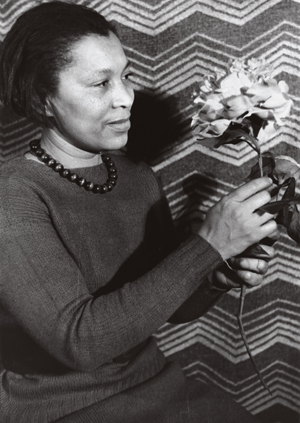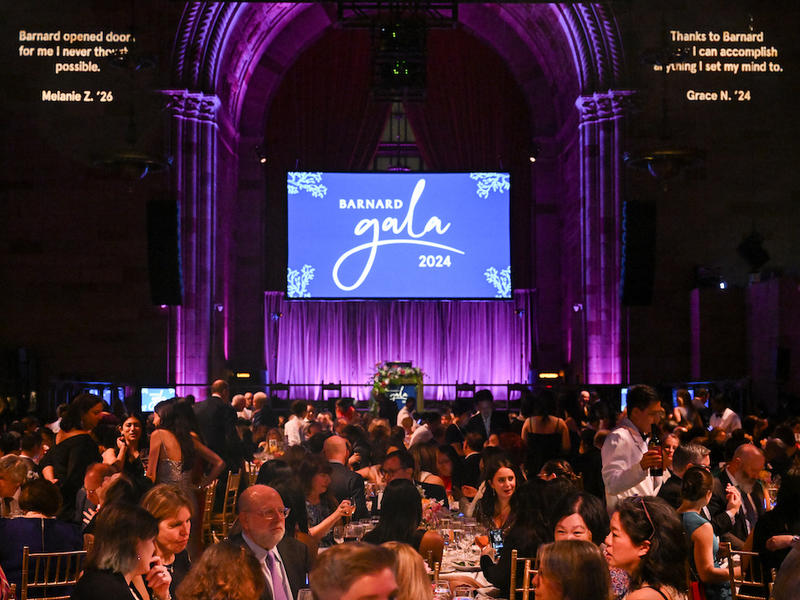What Hurston’s autobiography can and cannot tell us
This is a milestone period for Zora Neale Hurston ’28. September marked the 75th anniversary of the publication of her seminal novel, Their Eyes Were Watching God (Lippincott, 1937); 2013 would be her 85th reunion year. The milestone that may get only a mention, if not overlooked entirely, is the 70th anniversary this year of the publication of her autobiography, Dust Tracks on a Road (Lippincott, 1942). This synchronicity of events redirects attention to Hurston, her work, and her life as she revealed it rather than as we have been conditioned to read it.
 Since the 1970s, research on Hurston has in large part been a challenging, albeit necessary, fact-finding mission—a search for quantifiable data to reinsert Hurston and her work into the literary canon. Dust Tracks has been combed through for factual information about Hurston’s life, but as journalist Esther Armah has said, “Facts don’t convey enough of what a (life) history has been.” Additionally, Debra Plant, in her book, Zora Neale Hurston: A Biography of the Spirit (Praeger, 2007) suggested that “the essential Zora defies knowing in any factual sense...the essence of life itself is ever the mystery.”
Since the 1970s, research on Hurston has in large part been a challenging, albeit necessary, fact-finding mission—a search for quantifiable data to reinsert Hurston and her work into the literary canon. Dust Tracks has been combed through for factual information about Hurston’s life, but as journalist Esther Armah has said, “Facts don’t convey enough of what a (life) history has been.” Additionally, Debra Plant, in her book, Zora Neale Hurston: A Biography of the Spirit (Praeger, 2007) suggested that “the essential Zora defies knowing in any factual sense...the essence of life itself is ever the mystery.”Somewhere between Hurston’s historical data and spiritual mystery is the whole woman. This Hurston, as revealed in her autobiography, must be examined “with a harp and a sword,” so that a comfortable master narrative about her does not marginalize those experiences about which she wrote that can affect a fuller understanding of her.
Hurston recounted that her memories, dreams, and reflections were indicative of “that geography within [her],” her inner psychological process. However, her insights with regard to her dreams and visions, intuition, and initiation into Vodou/hoodoo have been reduced to curiosities, outright fabrications, or discrete anthropological exercises. Honoring Hurston’s other ways of knowing requires, first, that we give them credence and, second, that we utilize other ways of knowing the texts that delve into her life experiences.
What radical shifts might occur if we approach Dust Tracks on a Road as a blank slate, detaching from existing conclusions about Hurston, and allowing the truth within the text to reveal itself? First, we might be freed of suspicion about Hurston’s story. W. E. B. DuBois described autobiography as “incomplete” and “unreliable.” Jung wrote about the “self-deception and downright lies” found in many autobiographical texts. Yet Hurston’s autobiography seems unduly criticized in this regard. For example, inaccuracies have been noted in the autobiographies of Langston Hughes and Malcolm X, yet these texts continue to be upheld as credible must-read accounts of the respective authors’ lives. Hurston’s account of her life should be similarly dignified.
Second, we might gain facility with symbolic meaning, taking the lead from Hurston who studied Jung, Einstein, Freud, and spiritual teacher George Gurdjieff. The 12 visions Hurston describes in Dust Tracks take on new and revelatory meaning when read for their unconscious symbolism rather than for their presumed literal or contrived correspondence to events in her life.
We might also recognize that Hurston did not avoid race in an attempt to accommodate a broader audience, as some criticisms suggest. Hurston’s African-centered posture expressed in Dust Tracks has not been thoroughly explored. There is a genealogical line Hurston intended to trace, via religion and cosmology, from Africans in America, through Haiti and Jamaica, and ultimately back to West African Yoruba and ancient Egypt. Unfortunately, her application for a 1934 Guggenheim Foundation grant to make the trip to Africa was declined.
Dust Tracks also exposes the inaccuracy of concluding that Hurston’s father was the prohibiting parent. Hurston relayed her mother’s encouragement to “jump at de sun,” but Hurston wrote much more about conflicting messages, unfair expectations, manipulations, traumatizing upheaval—also legacies from her mother—and the burden of carrying these experiences into adulthood. A new approach to re- reading Dust Tracks on a Road would radicalize our conversations about relationships with our mothers, daughters, and other women, as well as with men, patriarchy, and power.
Jung wrote that “each of us carries the torch of knowledge only part of the way, and none is immune against error.” In the aim to advance knowledge about Hurston, it may be difficult to re-enter that murky space of questioning what we thought we knew. Hurston herself knew the value hidden in this state of obscurity. We may seem to be staring at the dark, but our eyes are watching God.
—by Sharon D. Johnson '85
—Photograph by Carl Van Vechten, used with permission granted by the Van Vechten Trust. Courtesy of the Barnard College archives.
—Photograph by Carl Van Vechten, used with permission granted by the Van Vechten Trust. Courtesy of the Barnard College archives.
Sharon D. Johnson, PhD, has written and lectured nationally on Hurston, the arts, and depth psychology. Her previous article for Barnard was “Literary Lion,” a feature on Ntozake Shange ’70 (Winter 2011).


